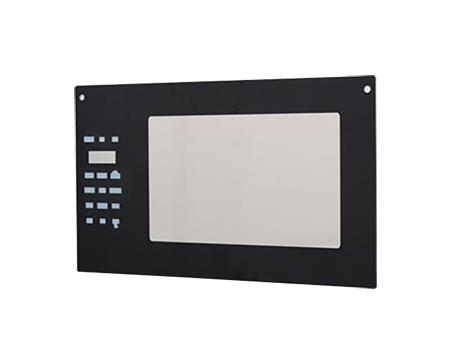DSG ADVANCED MATERIAL(THAILAND) CO., LTD.
Tel: +66 33 590 290
Fax: -
Contact: Mr. Blake Xiong
Tel: +66 91 802 0608
Email: dsg@dsg-glass.com
Mon-Sat 08.00 - 17.00 pm.
Address: Tiscom Green park Building 1,Tha sa-an,
Bangpakong, Chachoengsao, Thailand, 24130

Frosting refers to the adhesion of glass enamel powder of a certain size to high temperature silk screen . After baking at 580~600 °C, the glass glaze coating is melted on the glass surface and displayed with different color from the glass body. a decorative method. Adhesive glass glaze powder, can be brushed with a pen, or can be rolled with a rubber roller. Through the silk screen processing, the floor pattern of the frosted surface can be obtained. The method comprises: silk-screening a pattern pattern formed by a flux-blocking agent on the surface of the glass article. After the pattern pattern to be printed is air-dried, it is subjected to frosting. Then, after high-temperature baking, the frosted surface without the pattern pattern is melted on the glass surface, and the place where the silk screen pattern is applied is not melted on the glass surface due to the action of the flux inhibitor. After baking, the transparent floor pattern appears through the translucent sand surface, forming a special decorative effect. Frosted silk screen printing resistant consists of ferric oxide, talc, clay, etc., ground with a ball mill, with a fineness of 350 mesh, and blended with a binder before silk screen printing.

Making high temperature silk screen printing process: draft - screen version - printing glass etching ink - washing - finished product
1 . Script: Use the computer to design the desired pattern. The small format can be outputted by a laser printer, and the large format can be engraved on a black sticky note by a computer engraving machine or output by a laser phototyper.
2 . Web version: Please use 100-180 mesh polyester mesh for the screen version. It is best to use monofilament polyester mesh as the best.
3 . High-temperature screen printing glass etching ink, before printing, it is necessary to remove the stain and wet of the glass surface, fully mix the frosting paste (ie, screen printing ink), avoid using iron, and preferably use "bamboo wood" products. When printing, it is necessary to smear twice on the screen, the purpose of which is to increase the ink. For example, by hand printing, the etching ink can be scraped from one end to the other end, and then the blade is lifted to the back of the ink, and then scraped to the end of the printing. Its purpose is to increase the printing material. This means that the desired amount of ink is achieved on the glass surface. If the printing is done in winter, the etching ink should be heated to 20 °C -40 °C for optimum use. Float glass must be used when using glass, and flat glass is not desirable. Because the thickness of the glass is uneven, after the hot pressing of the high temperature silk screen , the unevenness of the cooling makes the material structure of the glass uneven, so even if it is printed, the planar effect of the etching is uneven.
4 . Rinse, store the first printed glass for three minutes, then rinse it in the pool or rinse it with tap water. After the water on the glass is dry, it will show a snow-like pattern. This kind of glass is very popular in the market and is loved by consumers.
Previous: Oven glass manufacturer
下一条: Touch panel glass-1


